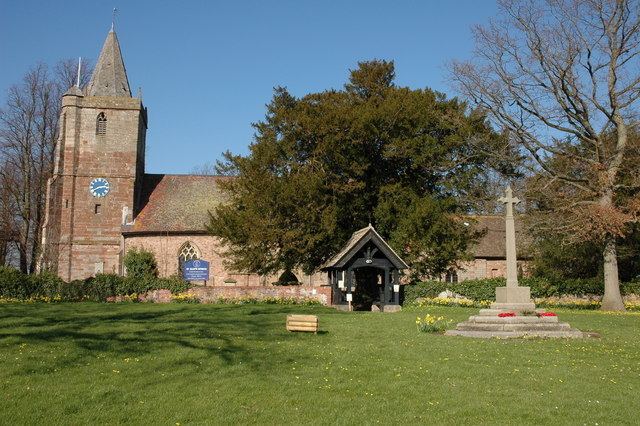OS grid reference SO700312 Post town Dymock | Sovereign state United Kingdom Postcode district GL18 Local time Wednesday 2:45 PM | |
 | ||
Weather 12°C, Wind W at 11 km/h, 72% Humidity | ||
Dymock is a small village in the Forest of Dean district of Gloucestershire, England, about four miles south of Ledbury, with a population of approx. 300 people increasing dramatically to 1,214 at the United Kingdom Census 2011
Contents
Map of Dymock, UK
It was the eponymous home of the Dymock poets from the period 1911-1914. The homes of Wilfrid Wilson Gibson and the American-born Robert Frost can still be seen there. Dymock is renowned for its wild daffodils in the spring, and these were probably the inspiration for the line "Two roads diverged in a yellow wood" in Frost's poem The Road Not Taken, which was a gentle satire on his great friend, and fellow Dymock Poet, Edward Thomas. In 2011 the village featured on Countryfile, where the Dymock poets were looked into in more detail.
Dymock is the origin of the Dymock Red, a cider apple, and Stinking Bishop cheese.
In the village of Dymock there are several interesting buildings which include cruck beam cottages; "The White House", which was the birthplace of John Kyrle - the "Man of Ross" in 1637, Ann Cam School of 1825 and St Mary's Church, a patchwork history in brick and stone with Anglo-Norman origins. Nearby stands the only remaining village pub, which was purchased by Parish Council to help preserve a thriving village. The pub is rented and run by a landlord and supported by a local fundraising and social committee "Friends of the Beauchamp Arms" (FOBA).
Dymock was served by the Hereford & Gloucester Canal, opened in 1845; this closed in 1881 and the section between Ledbury and Gloucester converted into a railway line, a branch line of the Great Western Railway, though a stretch between Dymock and Newent was by-passed as it was decided not to take the line through the 2,192 yard Oxenhall Tunnel. Dymock had a station on this line. The line closed in 1959, but the canal (including the tunnel), is now being restored.
Dymock gave its name to a school of Romanesque sculpture first described in the book The Dymock School of Sculpture by Eric Gethin Jones (1979). The school is noted for its use of stepped volute capitals and its stylised "tree of life" motif on tympana.
Dymock is the ancestral home of the Dymoke family who are the Royal Champions of England. It is thought that the Dymokes first lived at Knight's Green, an area just outside the village of Dymock.
Governance
The village falls in the 'Bromesberrow and Dymock' electoral ward. This ward starts in the north at Dymock and ends in the south at Kempley. The ward total population taken at the 2011 census was 1,901.
